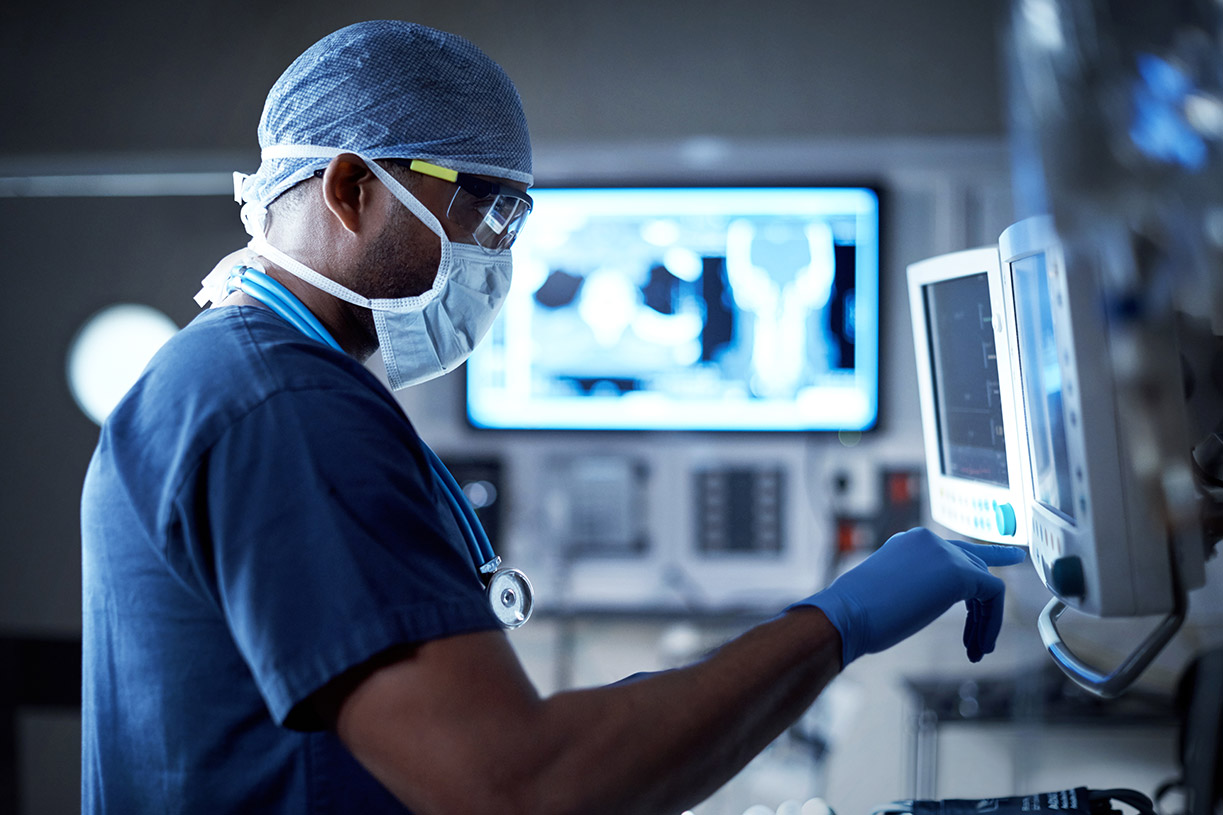Background: Repetitive Transcranial Magnetic Stimulation (rTMS) is a type of technology that can be used in treatment for psychiatric conditions. rTMS involves contact between the device and the patient’s head and uses electromagnetic induction to stimulate parts of the brain. This has been shown in clinical studies to be effective. This technology is non-invasive, stimulation of the brain happens through the skull so there is no need for the patient to be under anaesthetic. Following treatment, a patient can drive themselves home.
Magstim® a Welsh company that produce rTMS technology, loaned one of their devices to Hywel Dda University Health Board (HDUHB), for an evaluation at the adult mental health service within Glangwili hospital (GGH). This evaluation was carried out over a three-month period and finished at the end of April 2022. The reasoning behind this evaluation was that published research show that rTMS is safe and effective, but more work is required regarding cost effectiveness and and scalability within the NHS. This technology is currently not used clinically within any NHS Wales health board.
This evaluation was aimed at understanding the factors that might be important to organisations considering whether to adopt rTMS or not and also to explore the potential for a national roll out of rTMS technology in Wales. As part of the evaluation 10 patients with drug resistant depression were invited to receive 30 treatments of rTMS, each lasting 37 minutes each over a course of 6 weeks.
As part of the evaluation two questions were asked:
- Can rTMS be safely and quickly implemented as a service within NHS Wales? Is it acceptable to patients and staff?
Outcomes: All 10 patients that were involved in the evaluation completed all treatments. Positive changes were seen in most of the patients and these changes were noted in the clinical scores and from the patients themselves or family members. More data is needed regarding long term clinical effectiveness and to assess if costs are saved in other areas. An economic analysis and research projects into additional applications of rTMS would help to support justify costs of the device and the running of such a service.
Those who had gone through electroconvulsive therapy (ECT) treatments before, which is an invasive form of therapy that requires anaesthesia, expressed that rTMS was much more favourable. Most patients remained hopeful of treatments throughout the evaluation and stayed hopeful and positive towards the end of treatments even if they were not noticing these improvements in themselves. The great attention and care they got from the clinical team likely played a large role in the positive feedback from patients.
The majority of patients experienced fatigue from the treatments, and several experienced some level of pain or involuntary movements. Only a few patients had issues regularly attending the appointments, and those most affected by the frequency/total number of treatments were in full time employment. However, despite any discomfort or inconvenience caused, all patients completed their treatment and only a small number of individual treatments were missed.
The staff who were directly in contact with the patients during treatments had positive attitudes towards the device and its clinical potential. There was interest from staff in using the technology for further research to determine the effectiveness of other protocols to reduce the treatment lengths and to test it on other conditions or symptoms.
Currently the next steps following this evaluation is a robust economic analysis and business case development which is currently being developed by the Life Sciences Hub Wales (LSHW). If the business case shows a potential cost benefit to the health board, then this will support further research with rTMS devices within HDUHB. Exploration of clinical awareness and need for this technology and research into additional clinical applications are important next steps.


